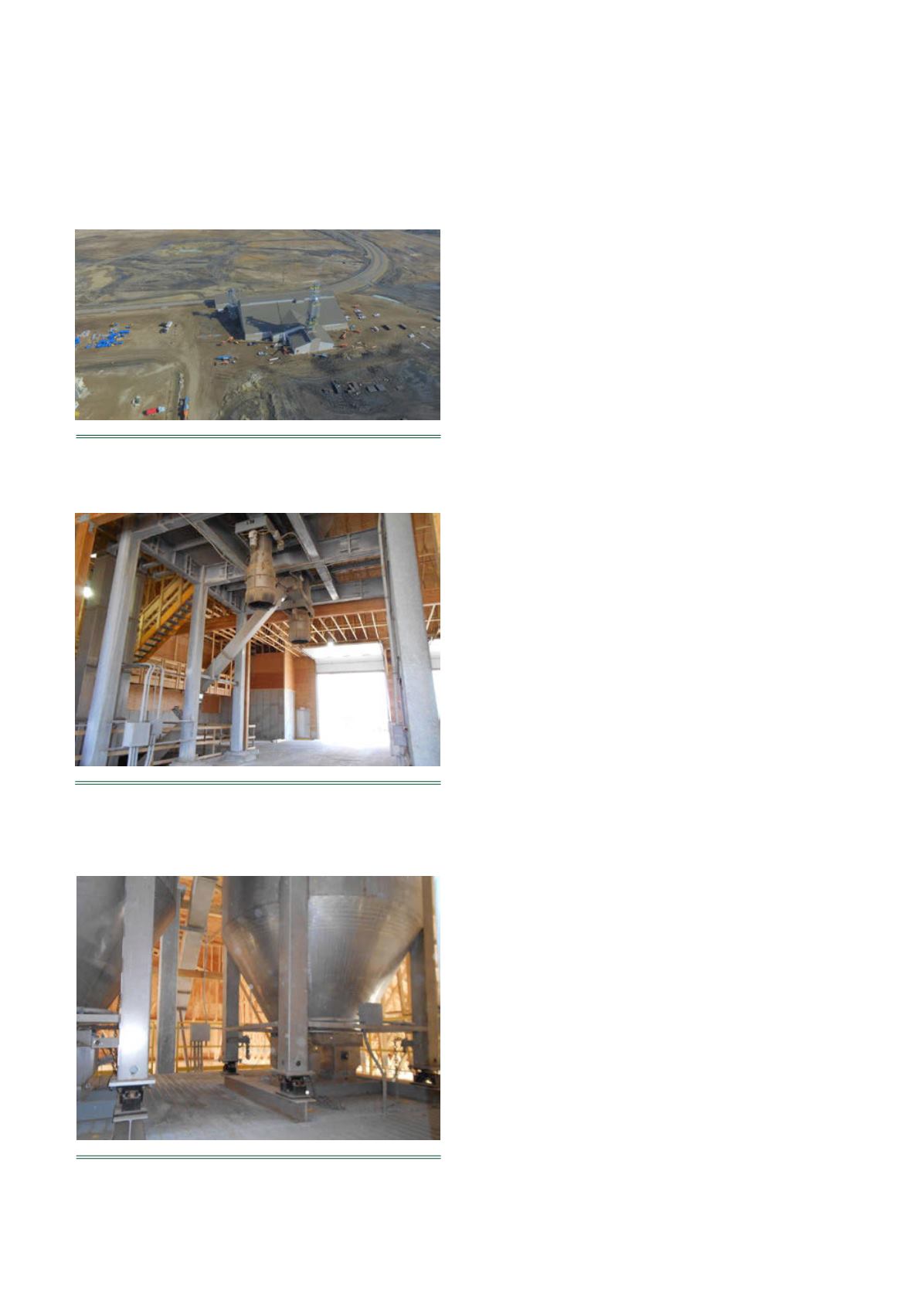
108
| WORLD FERTILIZER |
NOVEMBER 2016
needs, which benefits the industry at a time when it has
become more difficult to recruit employees for certain
technical and operational jobs, especially during the busiest
parts of the growing season.
Equally important is improved equipment reliability. The
new fertilizer handling equipment is designed with high
durability to last 30 years or longer, allowing for less
maintenance and reduced risk of costly downtime compared
to older systems still in use throughout the industry.
Meeting the needs of precision agriculture
Advances in blending technology also enable these CHS
facilities to keep pace with the continued growth of precision
agriculture by producing customised fertilizer blends
best-suited for different soil conditions on a farm. This is
especially important in parts of the US, such as the Dakotas,
where farmers are planting different crops than they have in
the past.
“Farmers understand their own soil and fields, and they
recognise that using a fertilizer blend, formulated specifically
for their growing conditions, is one of the most important
strategies to optimise their yields,” said Delane Thom,
General Manager of CHS Southwest in Lemmon,
South Dakota.
The new CHS Southwest co-op, which began operations
last spring, has a 15 000 short t fertilizer holding capacity
and also offers a full range of agronomic products and
application services for its more than 800 co-op farmer
owners. Its high-speed handling equipment includes a leg
and conveying system that can receive fertilizer products by
truck and rail at the rate of 1200 short tph; a tripper
conveyor which uses a remote-operated laser guidance
system to distribute fertilizer into selected storage bins; two
18 short t blenders; and a finished product conveyor and leg
system that enables the new co-op facility to load
10 semi-trucks per hour.
“This high-efficiency process enables us to turn around
our members’ trucks very rapidly,” said Thom. “Our goal is to
minimise waiting time and help them stay productive by
getting back to their fields as quickly as possible.” The new
site replaces a smaller, nearby CHS operation that lacked
enough capacity or expansion space to meet growing
demand.
Another new facility, CHS South Central co-op, opened
last spring in Sterling, North Dakota. Serving about 1200
co-op farmer-owners, it provides additional capacity to
supplement production at its two other regional operations
in North Dakota.
“Meeting production needs that help our customers be
more efficient now and for future growth is paramount,” said
Ed Mallett, Vice President of CHS Country Operations
Midwest region. “These high-capacity systems enable us to
serve our owners in a timely way, not only in providing basic
nutrients, but also by helping them to drive more revenue per
acre by blending micronutrients they may have overlooked in
the past.”
New hybrid blend tower
The new CHS Dakota Plains Ag co-op in Gwinner,
North Dakota, includes a new hybrid blend tower from
InterSystems that is the first of its kind in the industry as it
includes two towers (retail and wholesale) combined into one
single tower. This technology saves several hundreds of
thousands of dollars in capital expenses, without sacrificing
throughput speeds or blend quality, while servicing two
load-out lanes simultaneously.
The hybrid blend tower also provides added flexibility,
enabling the operator to service more customers, plus
Figure 1.
CHS Dakota Plains Ag co-op in Gwinner,
North Dakota, uses new, state-of-the-art hybrid blend
tower technology from GSI’s InterSystems brand.
Figure 2.
A durable galvanised tower structure at CHS
South Central co-op in Sterling, North Dakota, provides
proven corrosion protection that will continue to look
great year after year.
Figure 3.
Vertical tower blenders on load cells help
balance the loads into multi-compartment tenders at CHS
South Central co-op.


